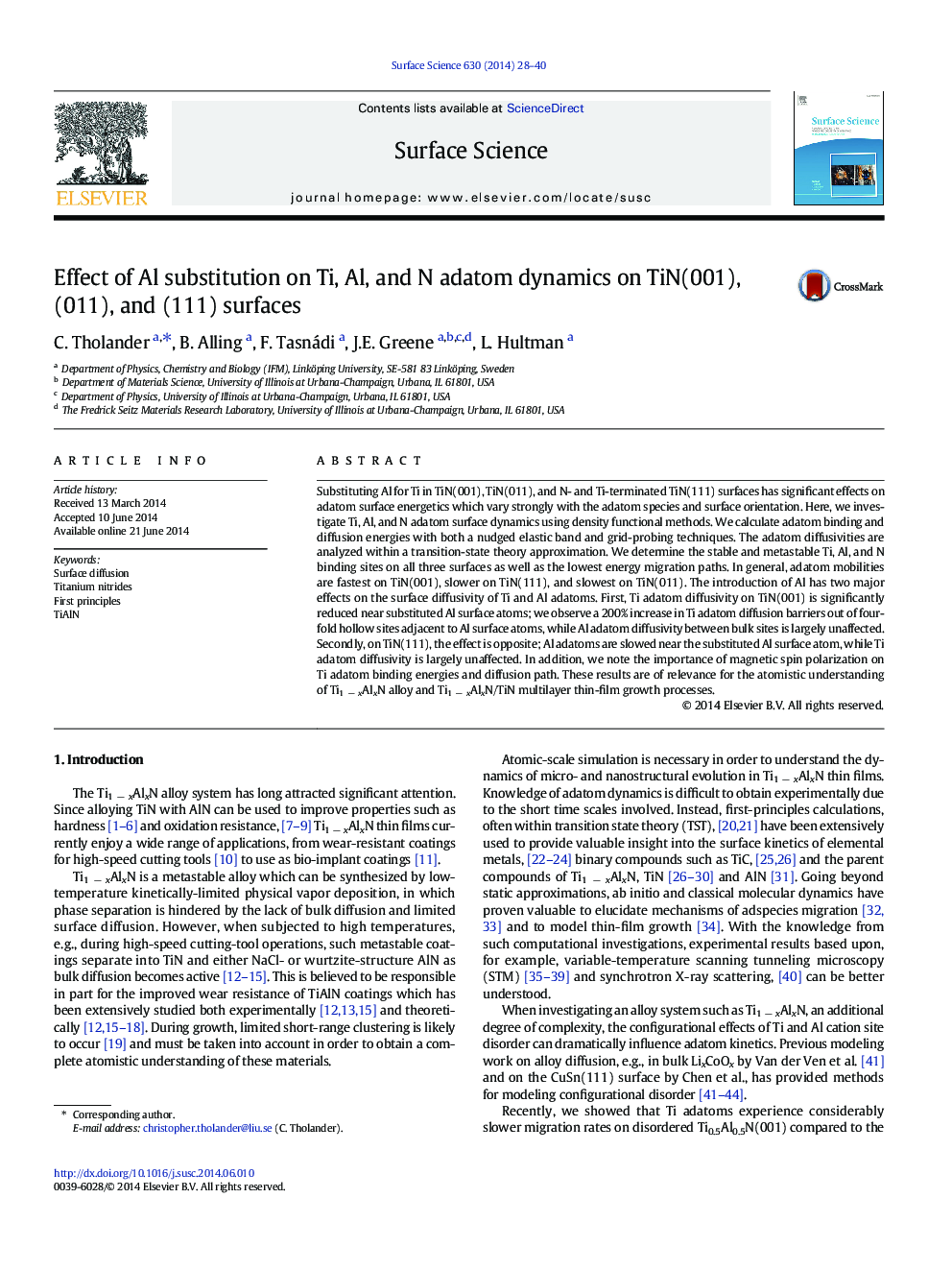| Article ID | Journal | Published Year | Pages | File Type |
|---|---|---|---|---|
| 5422018 | Surface Science | 2014 | 13 Pages |
Abstract
Substituting Al for Ti in TiN(001), TiN(011), and N- and Ti-terminated TiN(111) surfaces has significant effects on adatom surface energetics which vary strongly with the adatom species and surface orientation. Here, we investigate Ti, Al, and N adatom surface dynamics using density functional methods. We calculate adatom binding and diffusion energies with both a nudged elastic band and grid-probing techniques. The adatom diffusivities are analyzed within a transition-state theory approximation. We determine the stable and metastable Ti, Al, and N binding sites on all three surfaces as well as the lowest energy migration paths. In general, adatom mobilities are fastest on TiN(001), slower on TiN(111), and slowest on TiN(011). The introduction of Al has two major effects on the surface diffusivity of Ti and Al adatoms. First, Ti adatom diffusivity on TiN(001) is significantly reduced near substituted Al surface atoms; we observe a 200% increase in Ti adatom diffusion barriers out of fourfold hollow sites adjacent to Al surface atoms, while Al adatom diffusivity between bulk sites is largely unaffected. Secondly, on TiN(111), the effect is opposite; Al adatoms are slowed near the substituted Al surface atom, while Ti adatom diffusivity is largely unaffected. In addition, we note the importance of magnetic spin polarization on Ti adatom binding energies and diffusion path. These results are of relevance for the atomistic understanding of Ti1 â xAlxN alloy and Ti1 â xAlxN/TiN multilayer thin-film growth processes.
Related Topics
Physical Sciences and Engineering
Chemistry
Physical and Theoretical Chemistry
Authors
C. Tholander, B. Alling, F. Tasnádi, J.E. Greene, L. Hultman,
